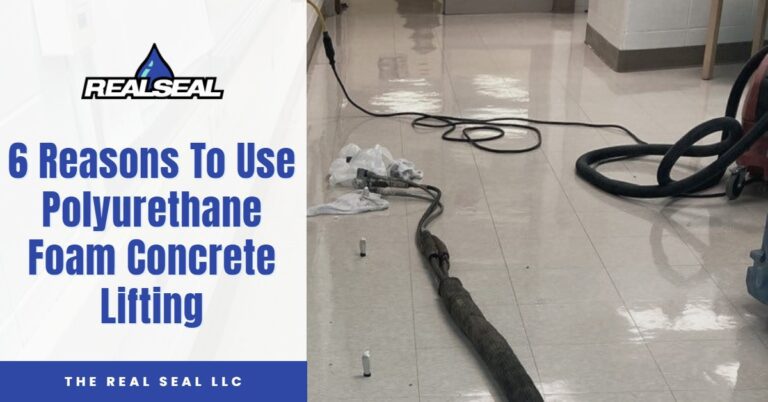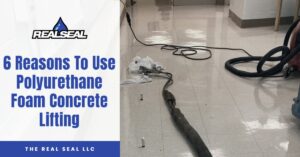If you’re unsure if you should use polyurethane foam for concrete lifting, this is the article for you. We’re going to clear up any doubts you may have by giving you six reasons to use polyurethane foam for concrete lifting. You’ll also learn when exactly you need concrete lifting and how much concrete lifting usually costs. Let’s begin.
How Does Polyurethane Foam Concrete Lifting Work?
If your concrete slab, patio, sidewalk, or driveway is sinking, it’s probably because the soil underneath is losing its strength. When this happens, experts will pump polyurethane foam through dime-sized holes in your concrete until it fills all the voids under the slab. Then, in just 15 minutes, the foam cures and hardens, lifting your slab back up.
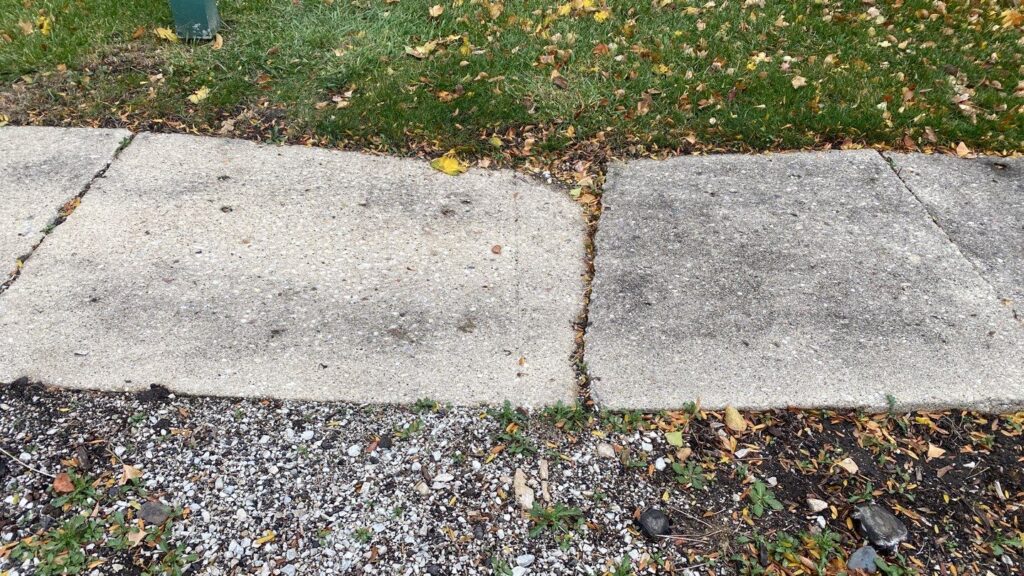
6 Reasons To Use Polyurethane Foam Concrete Lifting
Some blogs state that polyurethane foam has limitations when it comes to concrete lifting. But that’s just not true. Here are six reasons why polyurethane foam is still one of the best concrete lifting solutions available.
- Foam is quick and fast-acting – Once the polyurethane foam has been injected underneath your slab, it only takes 15 minutes to cure and become usable. Compare that to waiting 24 – 72 hours for a newly poured concrete slab or mudjacking slurry to dry. Also, you could end up waiting weeks for a concrete company to come out, pour the new slab, and wait for it to cure.
- Foam is non-invasive – Pumping foam under your slab only requires dime-sized holes. There’s no need for heavy excavation, digging, or large machinery. You also don’t need to worry about concrete trucks tearing up your yard.
- Foam is lightweight – Polyurethane foam only weighs 2.5 to 4 pounds per cubic foot. This means that the foam won’t cause the slab to sink again, unlike mudjacking, which can weigh about 100 pounds per cubic foot.
- Foam is non-toxic and safe – Polyurethane foam is non-toxic and inert. Inert means that the foam won’t move if it comes in contact with water. This means that the foam won’t leech any chemicals into the ground or grass.
- Foam is cost-effective – Compared to totally replacing a sunken concrete slab, which can cost in the thousands, concrete lifting is faster and more cost-effective.
- Foam is waterproof – Polyurethane foam is hydrophobic. This means that the foam will harden and stay hard if it comes in contact with water. Compare that to the mudjacking slurry, which is not waterproof and will wash away when it comes in contact with water.
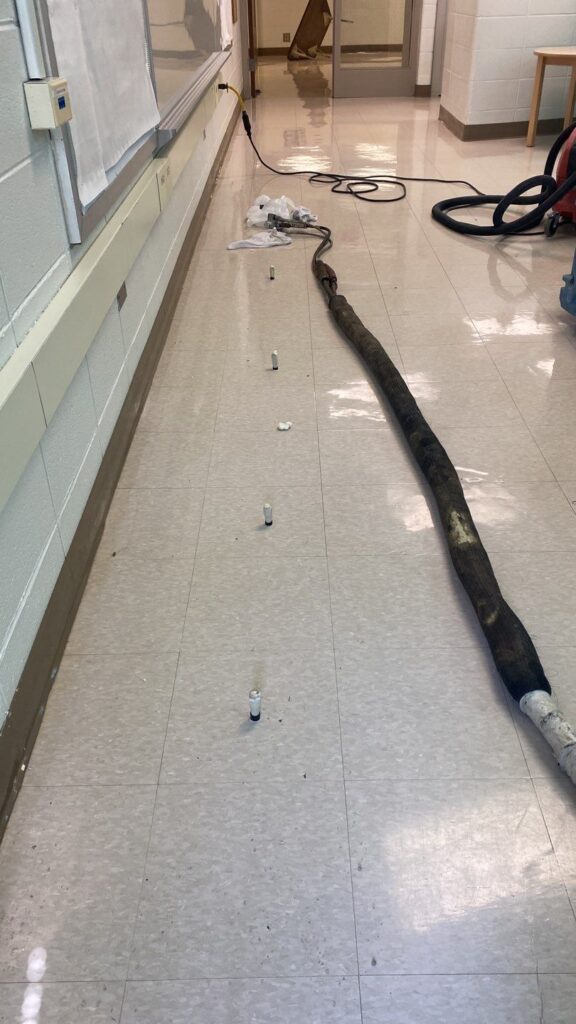
When Do You Need Foam Concrete Lifting
Here’s when you need foam concrete lifting.
- When water is washing the soil out from under your slab – If you have poor grading in your yard, or your gutters are pouring water too close to your concrete, the soil underneath your slab could be washing away. Another common scenario is if a sewer pipe breaks under your slab, allowing wastewater to leak and wash away the dirt.
- When your concrete was poured over improperly compacted soil – If the soil underneath your concrete slab was not correctly compacted, meaning the soil particles are too far apart, your slab could start to sink.
- When your concrete was poured over expansive soil – Clay rich soil, which expands and contracts based on moisture content, is called expansive soil. When expansive soil is soaked with water, it grows, lifting up your slab. Then, when the soil dries, your slab will sink back down.
- When your concrete was poured too close to large trees – Large trees have root systems double the size of their canopies. These roots will make their way underneath your concrete, lifting them up. Then, when the roots die or absorb all the water in the soil, they could leave behind voids under your slab.
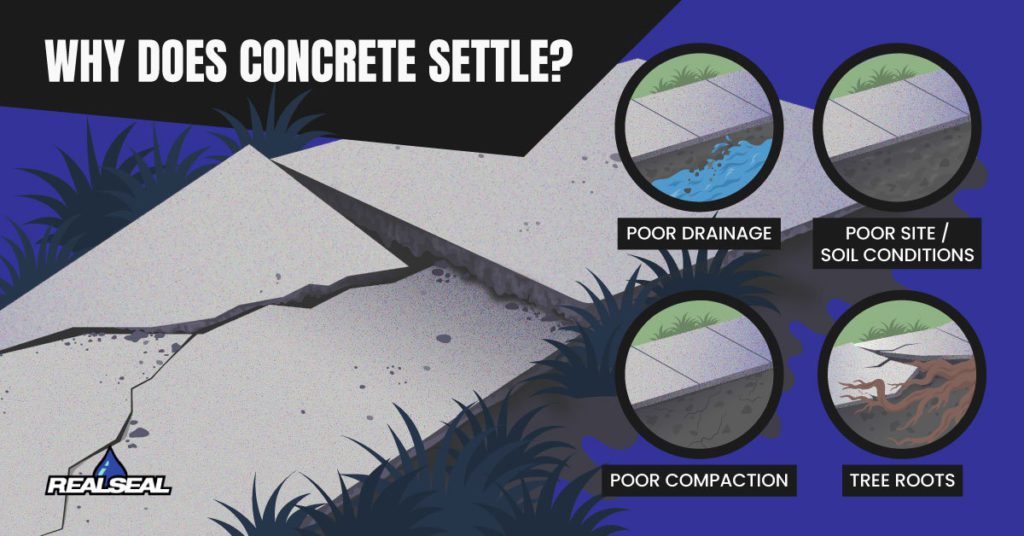
How Much Does Foam Concrete Lifting Cost?
Foam concrete lifting in the Chicago area usually starts at the base cost of $800. Then, the price changes based on what type of slab needs to be lifted.
- Sidewalks – The cost to lift a sidewalk depends on three things: the length of the sidewalk, how much the sidewalk is sinking, and how wide the sidewalk is.
- Driveways & Patios – The Real Seal has a base price of around $1,500 for lifting driveways and patios. It mainly depends on the void beneath the slab and how much lift is required.
- Interior concrete slabs – Interior concrete slab lifting is one of the most expensive types of concrete leveling. Mainly because the usual cause of slab sinkage is sewer breaks. If a sewer line breaks under your interior slab, it can wash the dirt away and leave behind large voids. But, the slab won’t sink right away because it takes a large void to sink your six-inch thick concrete floor. The bigger the void, the more foam is needed, raising material and labor costs.
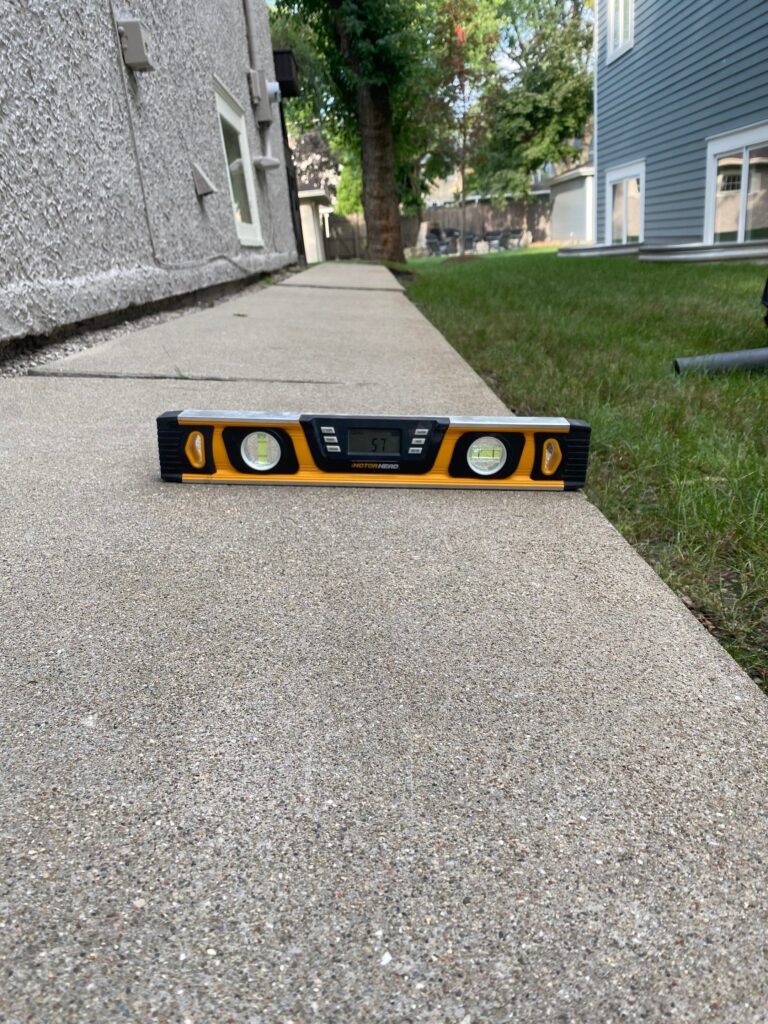
Note: One of the biggest costs that factor into foam concrete lifting has to do with the drainage around your sidewalk, slab, patio, or driveway. If you don’t correct any drainage issues before your slab is lifted, the problem will just keep returning, forcing you to keep lifting the slab repeatedly.
Who Offers Foam Concrete Lifting Near Me?
Are you living in the Greater Chicago area? If you have sunken concrete sidewalks, slabs, patios, or driveways, call The Real Seal today! We offer free in-depth inspections, free repair estimates, and the best solutions available. We also provide foundation repair, foundation waterproofing, crawl space repair, and more. Call now!
